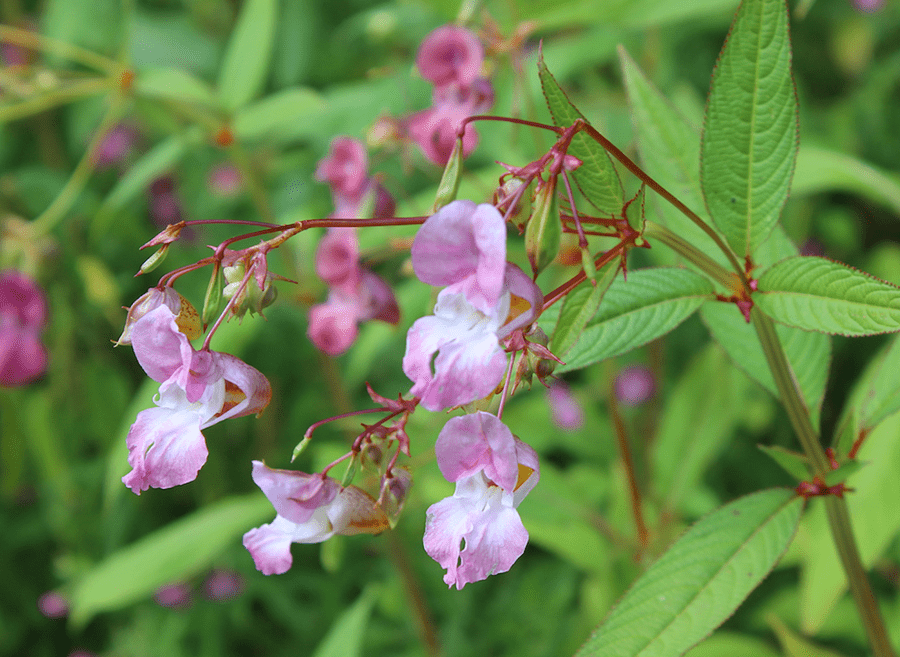Himalayan balsam is, also commonly known as Indian balsam, jumping jack, or policeman’s helmet, is an invasive terrestrial plant species that was originally introduced in 1839 as an ornamental garden plant. The nutrient poor soil along with extreme cold temperatures in its home range (the Himalayas) has caused this highly invasive plant to adapt to develop thousands of seeds. The Himalayan Balsam is especially frequent in damp soil areas such as along the banks of watercourses, where it often forms continuous stands. It is also commonly found in damp woodland, flushes and mires. Himalayan balsam has the rare ability to tolerate low light levels and shades out other vegetation, if left uncontrolled this gradually kills off other plants resulting in the impoverishing of habitats.
Himalayan Balsam can grow to 3 metre in height and has large purple to pale pink flowers between the months of June and October. Another key feature of this invasive species is its hanging explosive seed pods that can impressively catapult seeds over 6 metres away from the plant. The Himalayan Balsam can also be recognized by its hexagonal hollow stems that are reddish in colour and its dark green lance shaped with serrated edges. Once established in the catchment of a river the seeds, which can remain viable for two years, are transported further afield by water.
Without the proper management from a Horticulturist, the Himalayan balsam will reduce native plant diversity by approximately two thirds. Overall, the effects can be devastating to the surrounded affected area. For instance, when the native species are excluded by the Himalayan Balsam, the riverbanks are exposed to erosion in winter. This leads to subsequent potential sedimentation impact on fish spawning areas. It also attracts pollinating insects away from native species and increases risk of flooding due to siltation of water courses and bank instability.
When it comes to management or Himalayan Balsam, there are two types of treatments: chemical control and non-chemical control.
The non – chemical control is usually the most appropriate and commonly used. This method of control includes pulling or cutting the plants before they flower and set seed. It is imperative to cut the plant below the lowest node to stop regeneration. Cutting, however, needs to be carried out annually until no more growth occurs. Biological means of control can also be employed; Grazing by cattle and sheep is effective from April throughout the growing season in some situations.
Chemical control includes treatment by herbicide with a weed wiper in mixed stands, or by foliar spray in dense stands. The most effective weed killer for the removal of Himalayan balsam is one which is based on glyphosate. Glyphosate is a non-selective, systemic weed killer that is applied to the foliage.

